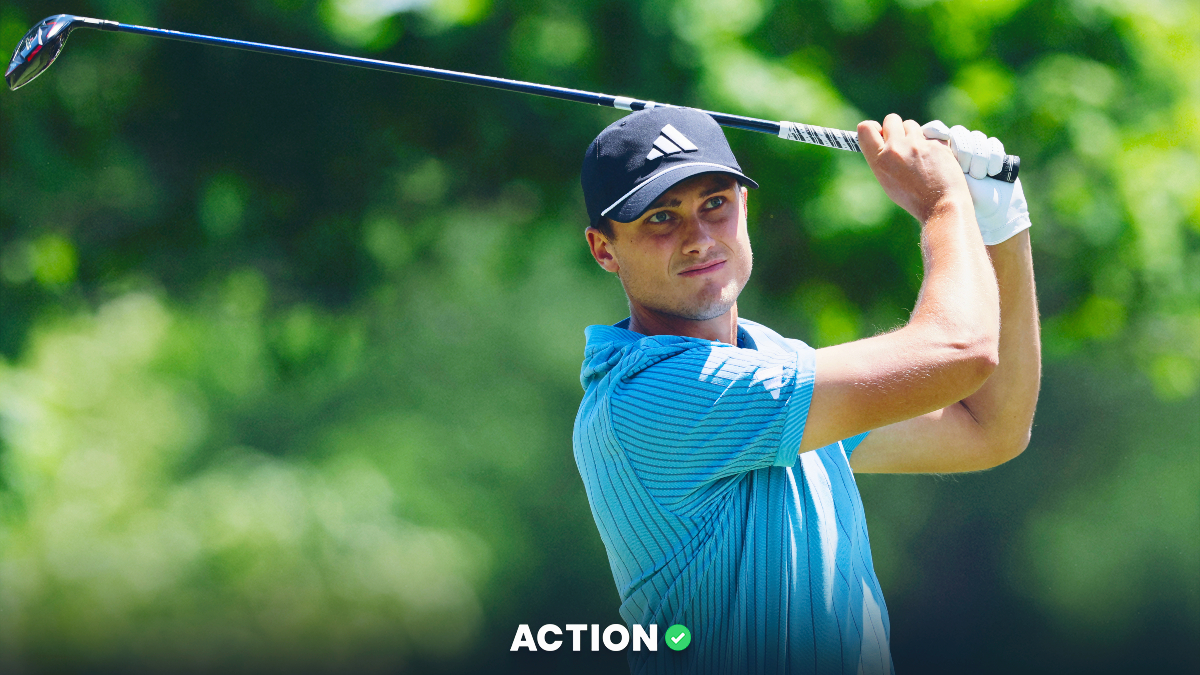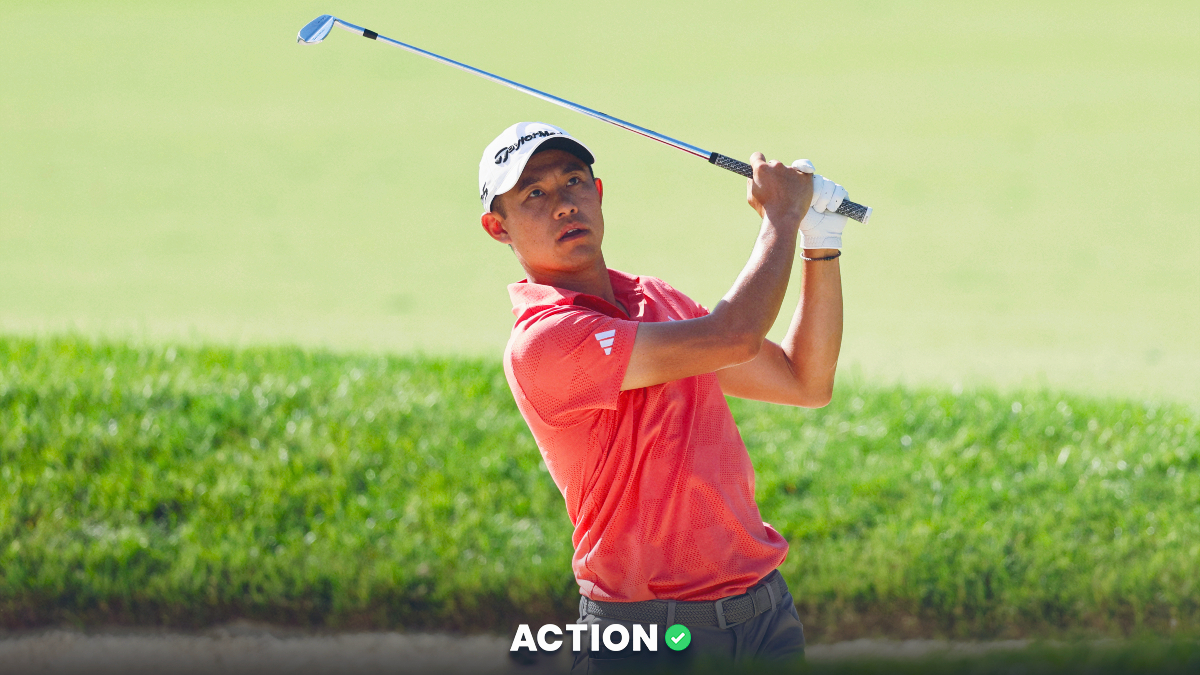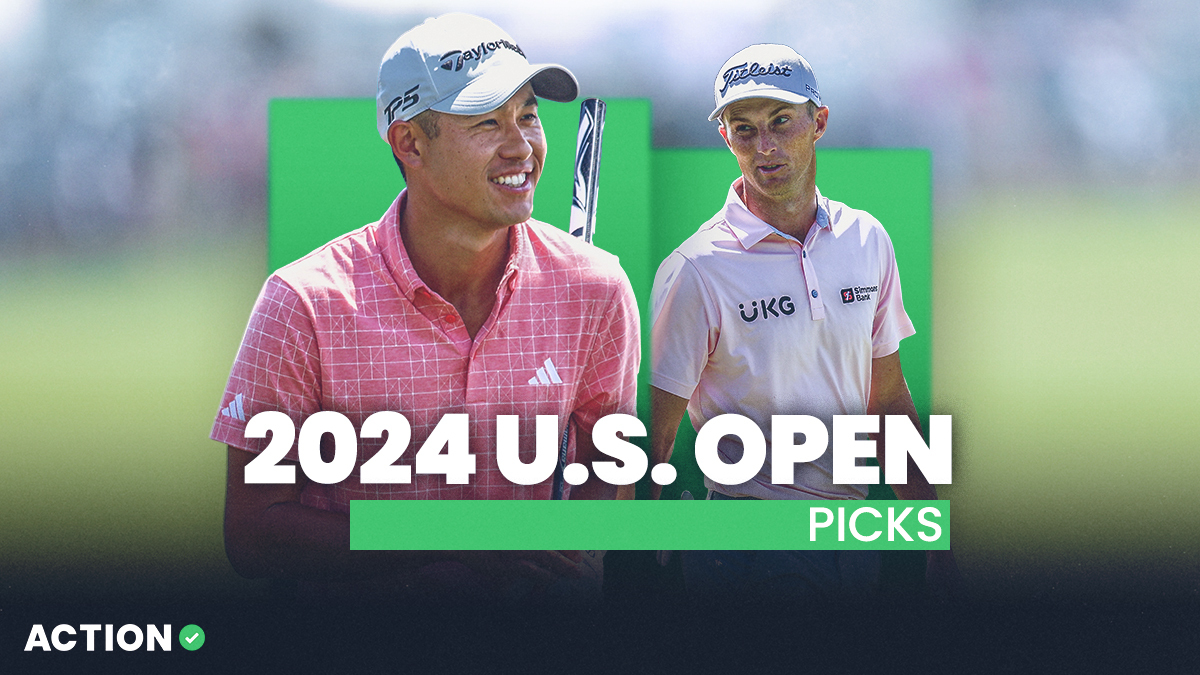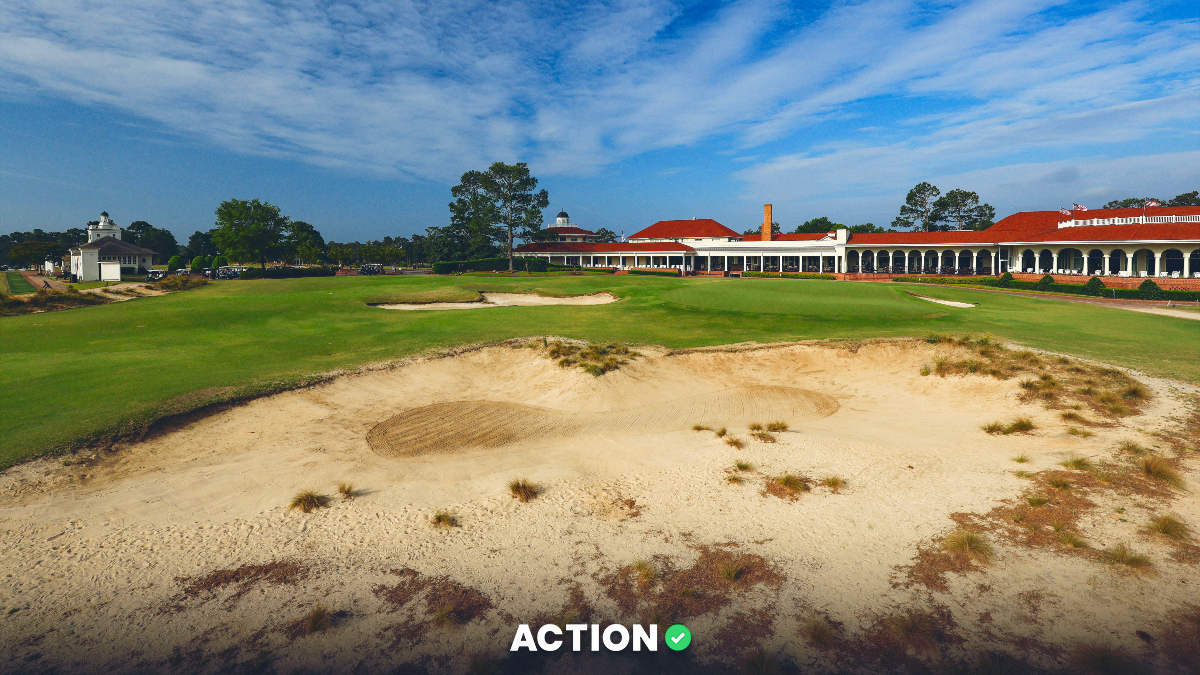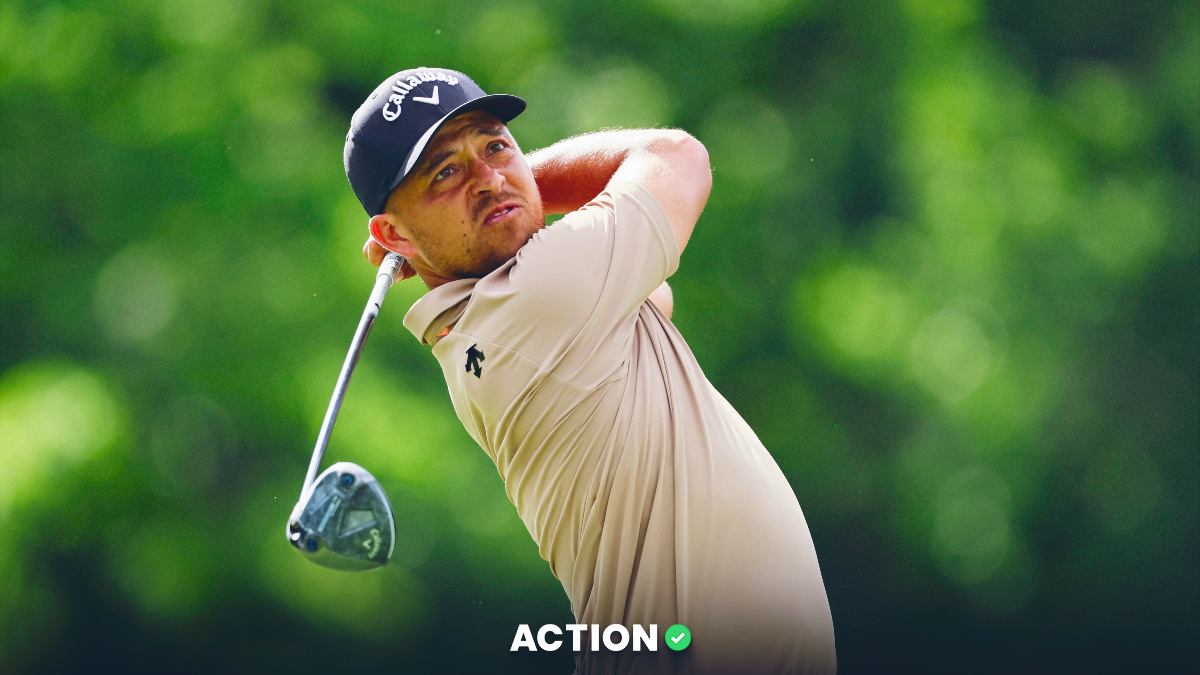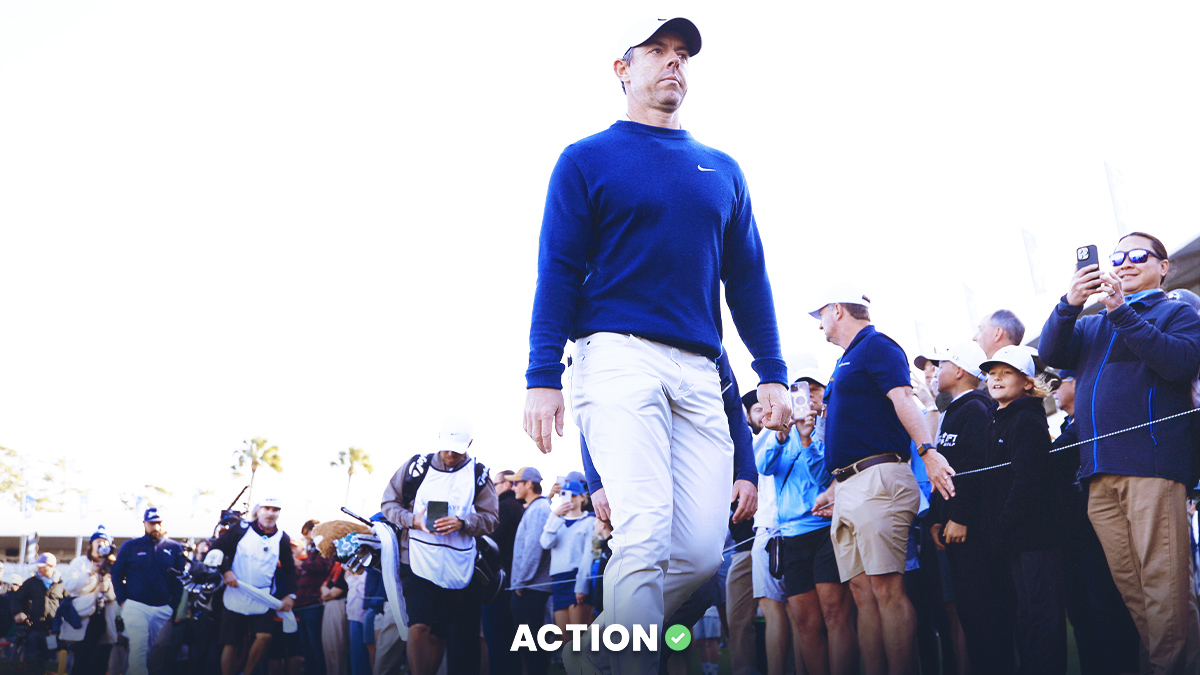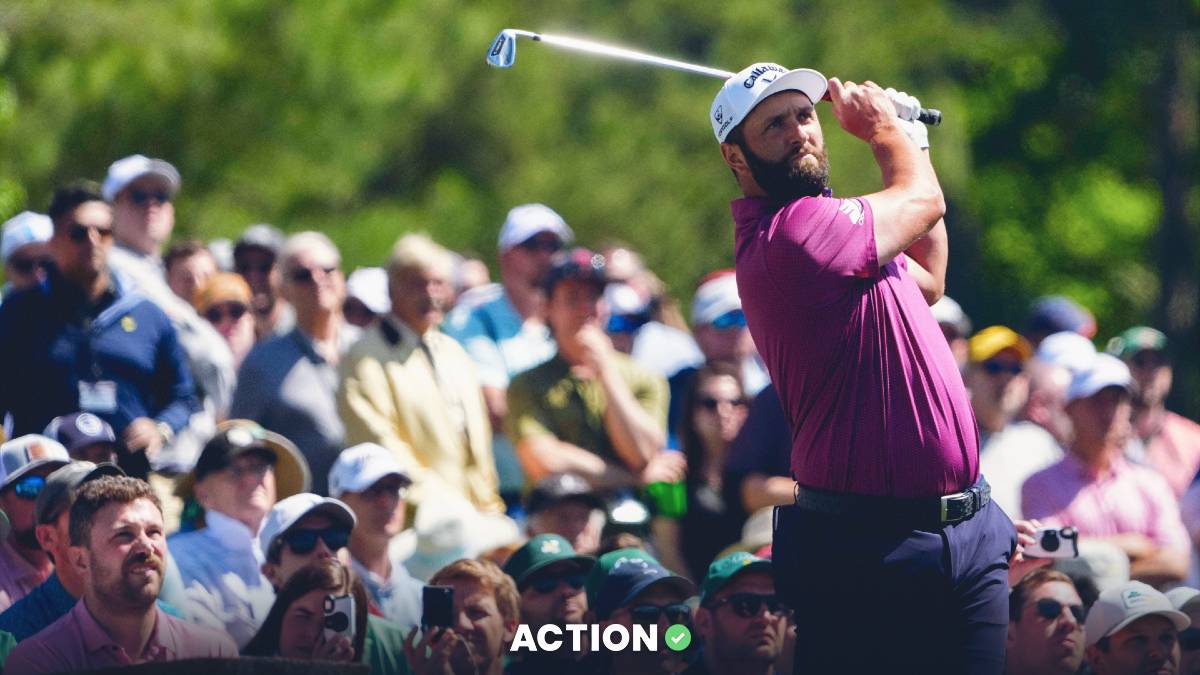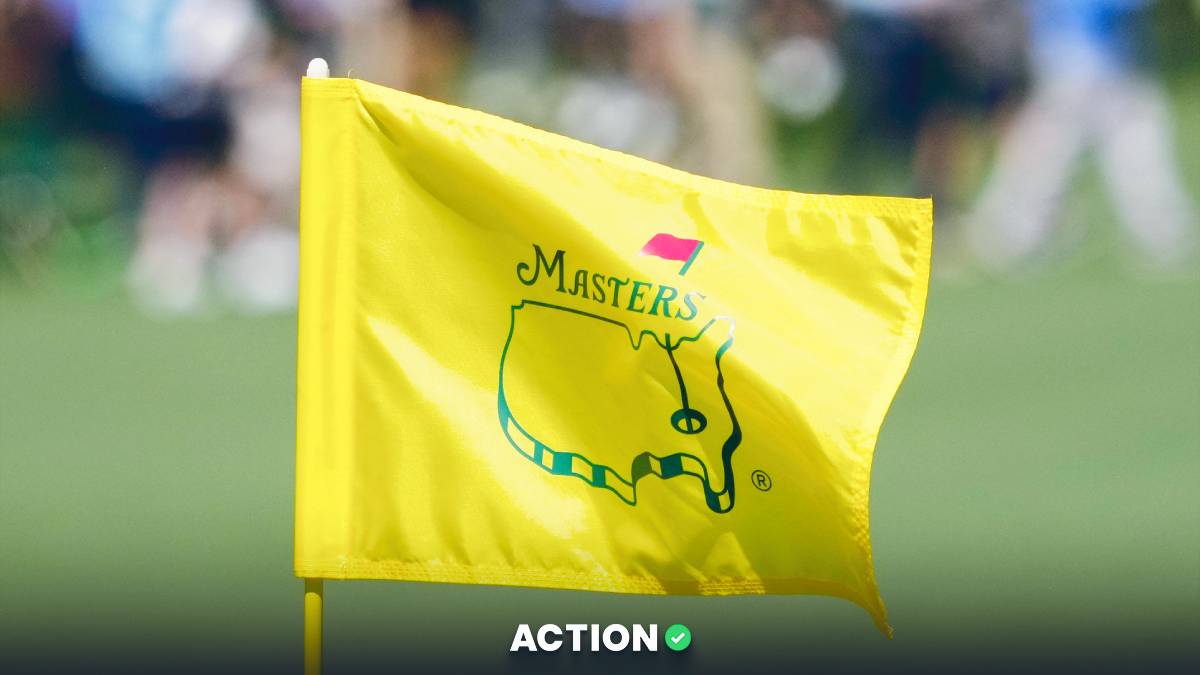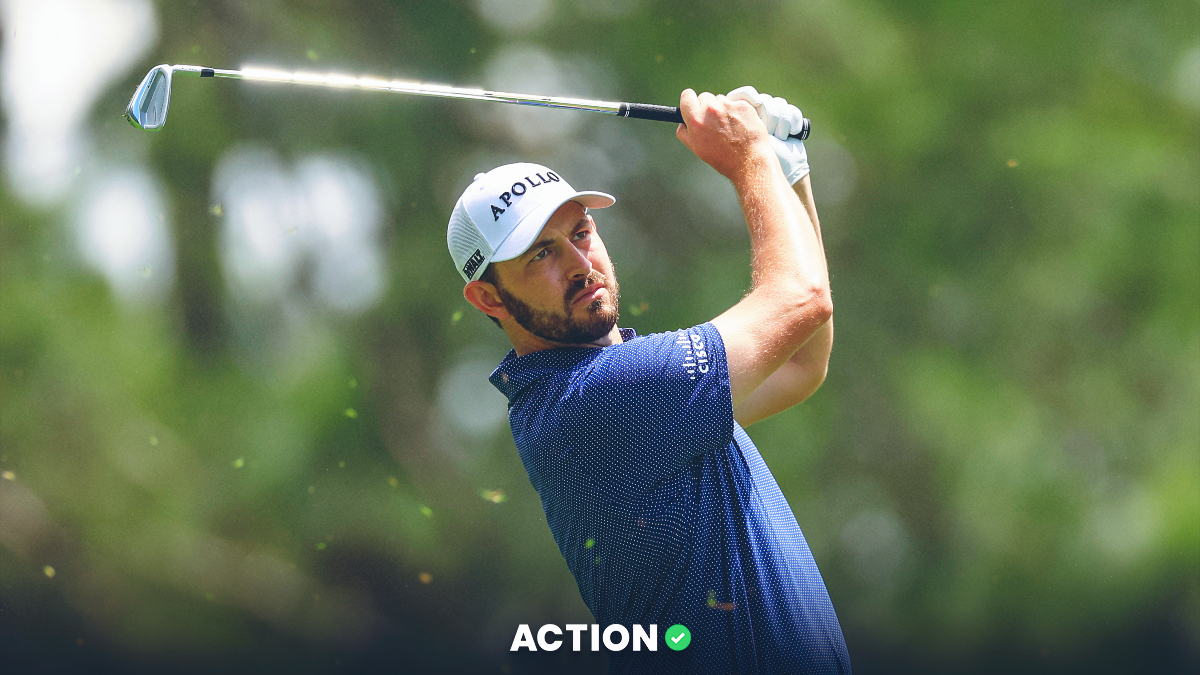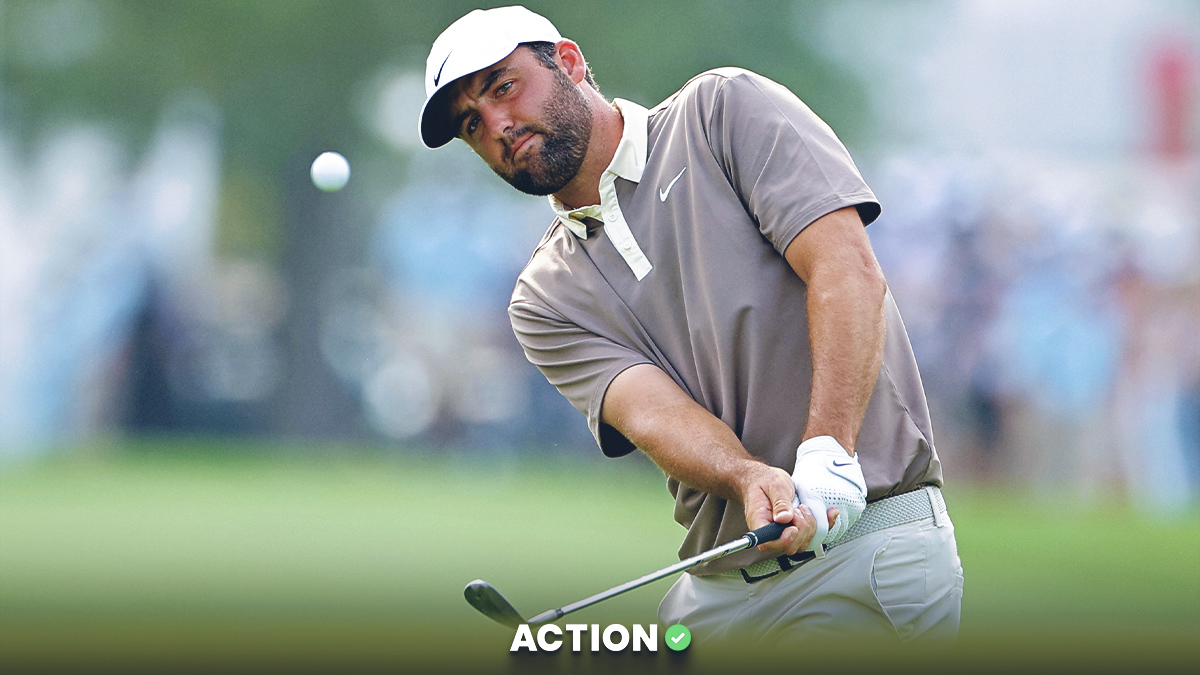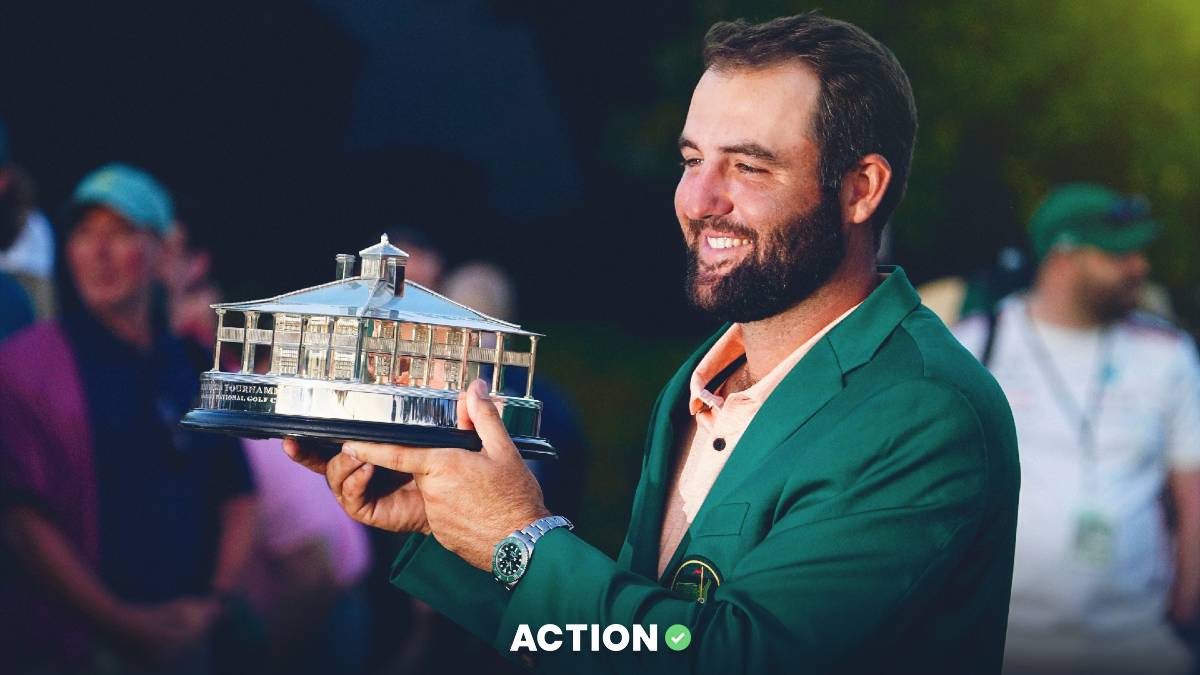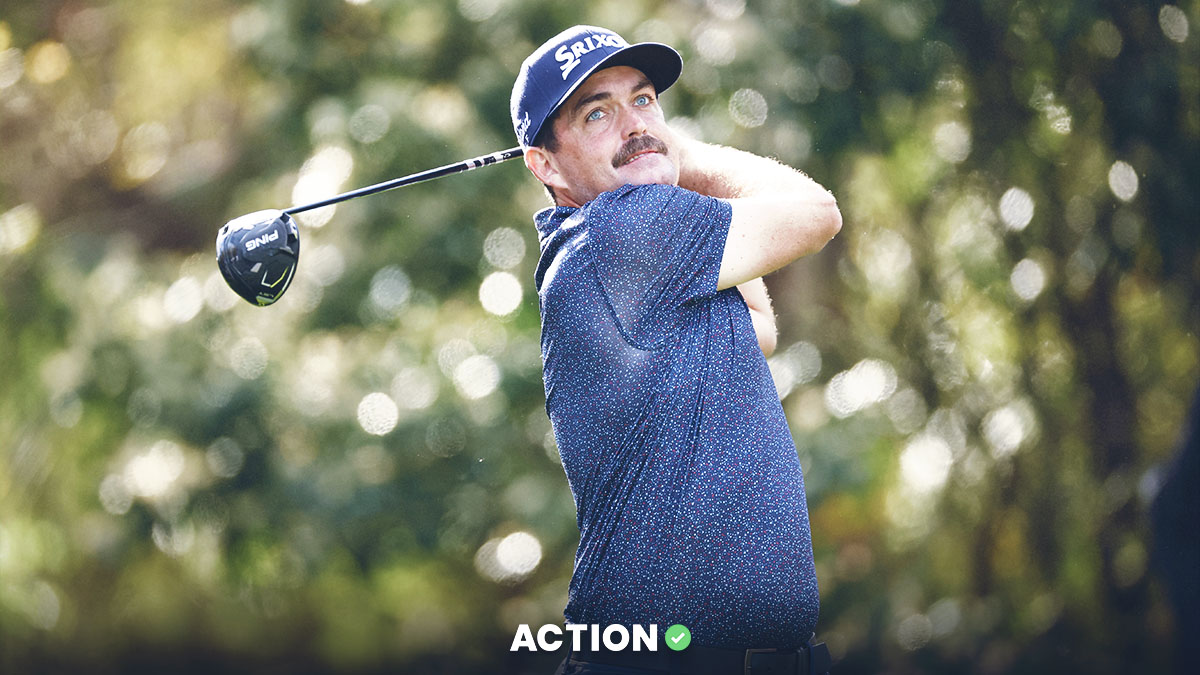If you want to win your U.S. Open golf pool, you've got to be comfortable coming in dead last, too.
Our typical recommendation for mass-entry pools like this — in which everyone can use the same teams/players — involves ignoring the most popular selections and trying to find comparable players who will be far less selected. If the popular selections do well, you're in trouble. But if they don't, you actually have a chance to win. And winning is all that matters.
If Scottie Scheffler wins, he ends up being the best play, even if 90% of people used him. But when 90% of the field uses him and he flops, you now have a massive leg up because almost the entire field is now at a huge disadvantage.
We've written about this style of selection for NHL playoff pools, NCAA Tournament brackets, NFL survivor pools, Masters pools and more. Much of the info will be the same because the strategy never changes.
There are many ways to set up a golf pool, but a typical pool involves "Tiers" in which you pick one golfer from each tier, and their total scores will be added up to create your team's overall score. You pick 6-8 golfers, and your top 5-6 scores count. Best aggregate score at the end of the weekend wins.
We'll use EasyOfficePools' standard tiers that use betting odds to sort the tiers, picking one player from the top five tiers and three players from the "everyone else" tier. Let's assume there are 100 people in the pool, and the top-four finishers get paid.
1. Strive to Win, Not 'Do Well'
Do you remember the pools and fantasy football leagues you've won? Some of them, probably. Do you remember where you finished when you didn't win? Unlikely.
In pools like this, the prize money is all going to the top. Finishing 25th of 150 counts the same as finishing 150th of 150 — you get nothing.
So, you need to differentiate your lineup if you want to win. To win, you need to get comfortable with the idea that in some pools, you may come in dead last by fading the "can't miss" players everyone wants to use. The bigger the pool, the more creative you probably need to get.
This concept will inform the rest of my strategy. I don't mind finishing last two years in a row if I can have a chance to win the third year. That pays much more than three straight 40th-place finishes (which is $0).
This doesn't mean you should just take the worst player in every tier. You want to take players who will be under-used relative to comparable players so that you can create unique lineups with leverage. It also doesn't mean you can't take Scottie Scheffler — if you do, just make sure the rest of your lineup is very different.
2. Pick Good Golfers
A few years ago at FantasyLabs, we analyzed millions of DFS lineups and found that floor is much more important than ceiling in golf DFS because the only thing that correlates with DFS success is making the cut. If you stay in the tournament, you raise your ceiling.
The takeaway from that article that stuck with me most: "Just try to make as many 6/6 lineups as you can and hope that at least one of them has everyone score high."
Golf is an inherently random game in a given round or week. Don't take putting, the most random part, and narrow the sample to just a certain type of grass. Just take the good players who hit the ball far and hit it close to the hole. In the long run, those players will win out.
You also don't have to pick players in Tier 5 and Tier 6 who you think will win the tournament; they're in those tiers because they won't win. So, take good players who you think will make the cut and play well; don't worry so much about "winning upside."
I like to use DataGolf's rankings as a measure of ability. Here are a few guys who rank higher in their global rankings than you might expect whom you should consider using (without considering what tiers they're in just yet).
8. Russell Henley
14. Christiaan Bezuidenhout
21. Sepp Straka
22. Alex Noren
48. Mackenzie Hughes
64. Taylor Pendrith
3. Get Contrarian & Find Leverage
Leverage is the idea that you can create value by choosing lower-owned players who have a comparable chance to play as well as a similar, higher-owned player.
With 100 people in your pool, would you rather be:
- One of 10 people who use Matthew Fitzpatrick (18% chance to finish top 10)
- One of 35 people with Hideki Matsuyama (19.1% chance to finish top 10)
Sure, Hideki has a slightly better chance to finish top 10, per the betting market. However, if he doesn't outplay Fitzpatrick, you're getting a huge leg up on the field — and all that matters is beating the other entries.
Here are the top players in our FantasyLabs DFS models in leverage score, which compares projected ownership to upside. It's DFS, so it's a bit different, but I think it gives you a decent idea of the guys that no one wants to use.
It's mostly players who are:
- Boring (Ryan Fox, Jason Day, Adam Scott)
- Out of form (Cantlay, Clark, Rahm, Spieth)

And here are the players with the highest ownership projections. It's mostly:
- Players in great form (Scheffler, Schauffele, Morikawa)
- Players thought of as "major" guys (Hideki, Koepka)

3b. Why Leverage is So Important
If you've ever been in contention in a tiers golf pool like this, you know the changes in standings slow down on Sunday. Naturally, if you're near the lead, you'll share many of the same players with the other entries at the top. So while the top players in contention don't actually sway the standings, it comes down to your Tom Hoge vs. your opponent's Keith Mitchell (and neither player will be shown on TV once).
You need players your opponents don't have so you can move up while their position in the standings remains the same.
This visual represents leaderboard movement when Jon Rahm, owned by just two of the top 10 entries, birdies a hole, versus when Scheffler does.
The hard part is you don't know who will be the most-owned golfers in these pools. It's not like the NCAA Tournament, where Yahoo! and ESPN will actually tell you.
So we have to make some assumptions. We do DFS ownership projections at FantasyLabs, which can give you some idea. Tyler Tamboline on Twitter does a good thread highlighting the most recommended players in the industry you'll probably want to avoid.
4. Use Odds But Not Blindly
Most people don't follow golf closely enough to separate top 50 players like Sepp Straka from Si Woo Kim, let alone Davis Thompson from Taylor Moore, so they let the betting market do it for them, which isn't a bad approach at all.
But if Moore only has a 0.5% better chance at finishing top 20 than Thompson, and Moore will be owned at a much higher rate because he's touted as a popular sleeper that week, you should always opt for Thompson.
So don't get too caught up in the odds — the difference between 120-1 and 150-1 is .17%, but the difference between a player being 25% used and 4% used could be massive for you.
Here's how two tiers looked in last year's US Open in a ~150 entry pool I did. The two highest-owned players will usually have the best odds, or close to it.
You should also not use the betting odds that your pool site gives you. They're often stale and don't update throughout the week as the betting market changes. For example, EasyOfficePools has Jordan Spieth at 55-1, but Pinnacle has him north of 80-1.
5. "Ignore" Course History & Fit
Some players will fit Pinehurst No. 2 better than others, but they tend to get overhyped in the days leading up to the tournament.
It's the same question as before. Would you rather have:
- A player who will be 20% used and fits the course, but the betting markets gives him a 19.1% chance to finish top 10 (Hideki Matsuyama this year).
- A player who doesn't fit the course and has been written off by everyone this week, but has a 17.4% chance to finish top 10 (Sahith Theegala).
Is it possible Theegala, whose short game has been awful this season, just can't chip his way around Pinehurst? Definitely. But if he doesn't and maximizes the rest of his game, I have a huge leg up since no one else used him.
6. Be a Hater
Last year before the Masters, I recommended using LIV golfers because 1) many golf fans turned on them, and 2) they had all been in pretty poor form entering the Masters or hadn't played much. After Bryson DeChambeau's two good majors in 2024 and Koepka's historical performance in USGA setups, I think they'll be popular, but I'm not sure about the guys beyond them.
I'm also always interested in using the players that people love to hate — Cantlay, Brian Harman, Patrick Reed. Disliked for a variety of reasons, but disliked nonetheless. Casual golf fans participating in a few pools per year want to use and root for guys they like, which is why Tiger Woods still garners interest.
LIV Golf players I think will get interest:
- Brooks Koepka
- Bryson DeChambeau
- Cam Smith
LIV Golf players I think will be ignored:
- Jon Rahm
- Tyrrell Hatton
- Dustin Johnson
7. Tier-by-Tier Breakdown
Alright, let's dive into the actual tiers on EasyOfficePools. I'm much more interested in how players fit into their tiers, rather than their outlook in a vacuum.
Hideki Matsuyama, for example, won't interest me much if his tier is all Asian and Australian players, since I'd expect him to be highly owned. But if he's in a tier with Ludvig Aberg and Viktor Hovland, suddenly he becomes much more interesting to me. It all depends how your pool sets it up.
I've listed the odds from EasyOfficePools alongside the odds from Pinnacle as of Tuesday night to give you an idea of how the real betting market views these players.
Tier 1
- Chalky play: Scottie Scheffler
- Contrarian play: Anyone
It's hard to imagine Scottie not being 70%+ owned, and I don't blame anyone for using him. I think you have two options:
- Don't use Scheffler, and the rest of your lineup can be a little more chalky.
- Use Scheffler, and make sure the rest of your lineup is very differentiated. This has paid off at the Masters and PGA.
If you don't use him, there are tons of good options, and I don't think you can go wrong with anyone because I think they'll almost all be sub-10% owned. This is your chance to get a lightly-owned Brooks Koepka or Viktor Hovland, if that's your jam. I'd guess Collin Morikawa will be the second most-used player given his form, but it's tough to say.
The only players I see garnering almost no interest are Jon Rahm (form and possible injury) and Tommy Fleetwood (given the depth of the tier). Rahm could be worth a flier with one entry since I don't think anyone will want to use him in this tier with so many other big names.
Tier 2
- Chalky play: Justin Thomas
- Contrarian play: Tom Kim
Maybe I'm too deep into golf Twitter, but I think Cam Smith might end up being kind of trendy this week, and he has the best odds in this tier. Especially considering there are enough holes to poke in the rest of the tier:
- Cantlay (form, and no one likes using him)
- Justin Thomas (can't putt)
- Max Homa (hasn't been great in majors)
- Jordan Spieth (form, possible injury)
I'll opt for Justin Thomas as my chalkier play, and Tom Kim as my contrarian play. Kim's been in good form over the last two months and finished T8 at last year's U.S. Open. There aren't any obvious holes in his game.
Tier 3
- Chalky play: Tony Finau
- Contrarian play: Keegan Bradley
I don't know who will be the most popular players in this tier. Everyone seems to have soured on defending champ Wyndham Clark; Zalatoris and Cam Young are good major players but not in great form. Sam Burns eats up easy golf courses; Theegala can't chip.
I'll roll with Tony Finau. I don't think he can win the tournament, but he's trending in the right direction, and his floor is high with four top 20s in his last six starts.
Tier 4
- Chalky play: Russell Henley
- Contrarian play: Si Woo Kim
Si Woo Kim was one of the most popular players in the middle tiers at both the Masters (T30) and PGA Championship (missed cut), so I expect the interest on him to cool. Like Finau, I think his floor is pretty high, and he does a lot of things well — he's accurate, his approach game is in good shape, and he's good around the greens. He just can't putt.
In a vacuum, I also really like Russell Henley and Byeong Hun An this week, though I expect they'll be pretty popular. They'd be my plays if I skip Scheffler at the top.
Tier 5
- Chalky play: Alex Noren
- Contrarian play: Harris English
I don't really know who will be highly used in this tier either; my first reaction was Burmester and Bezuidenhout, but again, maybe I'm too deep down the Golf Twitter rabbit hole.
Harris English checks a lot of good boxes for these pools. He's missed his last two cuts, but he's competed in U.S. Opens and other majors before. Prior to the two MCs, he'd finished top 35 or better in eight of nine tournaments. You don't need your Tier 5 pick to win, just to compete.
Tier 6
In some pools, you may pick multiple golfers from this tier. This is when people who don't follow golf tend to get lost and gravitate toward the guys with the best odds and the names they know, so I'll usually end up skipping the guys toward the top and opting for a few guys from spots like 10-30 in the tier. Again, don't take the worst players just to be different.
Here are some guys I like:
- Mackenzie Hughes: He's good at U.S. Opens despite not being a great ball-striker, and you'd hope his putting and creativity around the greens can help him make the cut this week.
- Davis Thompson: He has a decent all-around game and has the pedigree to become roughly a top-40 player. I don't expect him to be very popular.
- Taylor Pendrith: He hammers the ball and can putt, so I'm hoping that will set him apart this week despite his lack of accuracy off the tee. Pendrith is in good form with a win and four T11 or better finishes in the last two months.
- Victor Perez: He's not a big name and has played well the last two weeks with a T12 at Memorial and a third-place finish at the Canadian Open.
- Adam Svensson: A good ball-striker who makes cuts but never really competes. No one will use him, and he's a fine choice to fill out the bottom of your team.
- Mac Meissner: A PGA Tour rookie, Meissner has six top-30 finishes in his last 10 starts, albeit in some easier events. I can't imagine anyone using him — like maybe not even a single person besides me.
Scheffler entry:
- Tier 1: Scottie Scheffler
- Tier 2: Tom Kim
- Tier 3: Tony Finau
- Tier 4: Si Woo Kim
- Tier 5: Harris English
- Tier 6: Mac Meissner, Adam Svensson, Taylor Pendrith
Non-Scheffler entry:
- Tier 1: Ludvig Aberg
- Tier 2: Justin Thomas
- Tier 3: Tony Finau
- Tier 4: Russell Henley
- Tier 5: Alex Noren
- Tier 6: Mackenzie Hughes, Mark Hubbard, Davis Thompson
That's it! That's all I've got for you.
Again, try to poke around, get a sense of who everyone is talking about and avoid those guys. Use betting market data, but don't trust it blindly because everyone will do that.
And most importantly, don't be afraid to finish last. You will more often than you win, but when you win, you'll actually win money.


